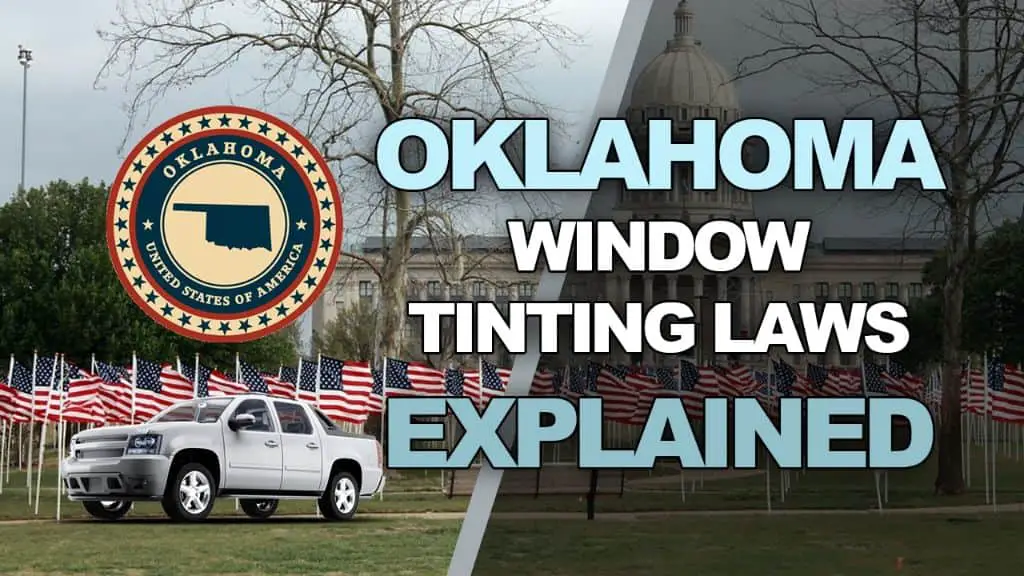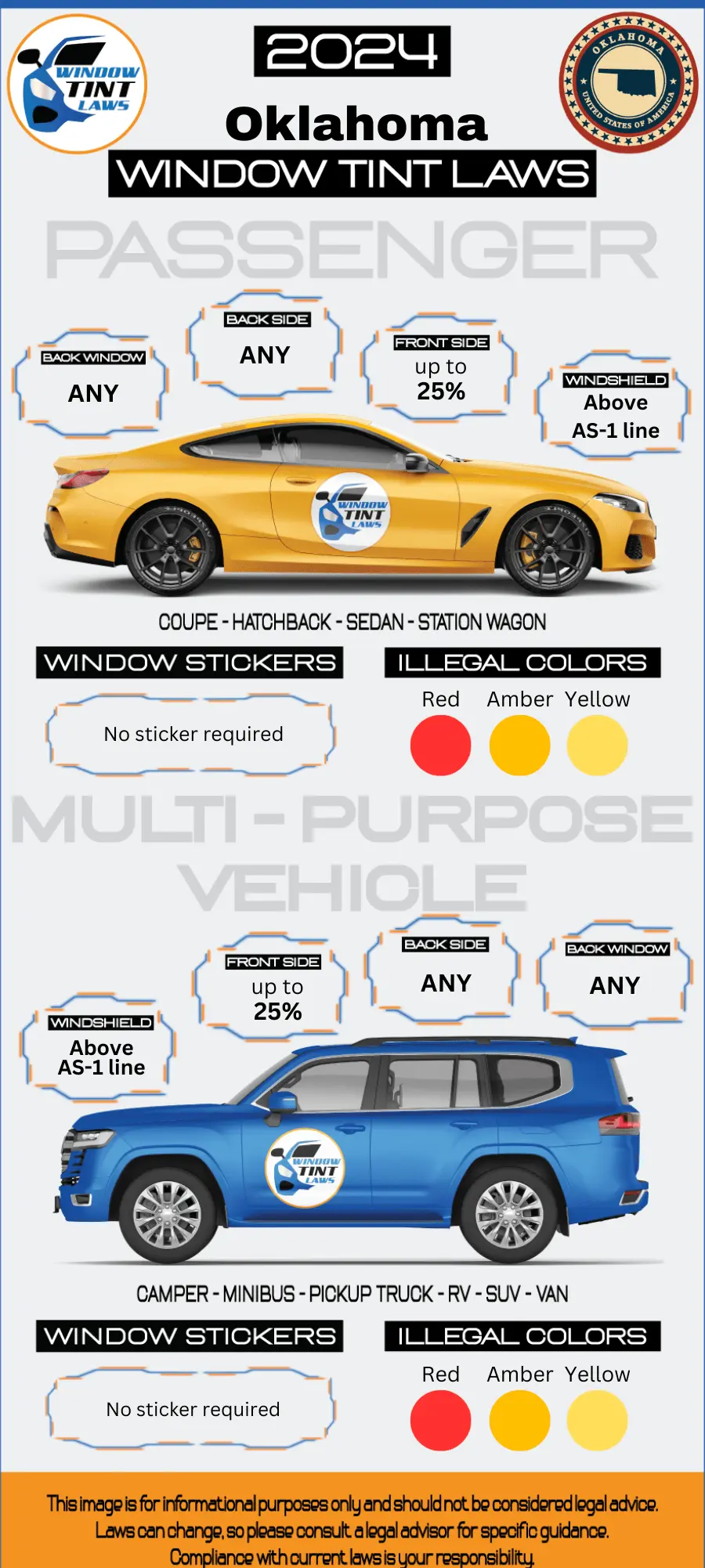

Article Created by Ryan Pietrzak
Last updated on February 14, 2024Oklahoma Tint Laws – 2024 Updated Legal Tint Limit
Please note that Oklahoma Tint Laws Regulation can change daily and may be interpreted differently at the city or county level. We recommend verifying this information with your local DMV or law enforcement agencies. We have manually fact-checked this content using official state resources. Oklahoma enacted tinting laws in 2004. If any information provided is incorrect or outdated, please contact us so we can make the necessary corrections. Thank you.
2024 Oklahoma Tint Laws – Legal Tint Limit For Passenger Vehicles
- Front Windshield: Non-reflective tint is allowed above the manufacturer’s AS-1 line
- Front seat side windows: up to 25% tint darkness allowed
- Back seat side windows: Any tint darkness can be used
- Rear window: Any tint darkness can be used
2024 Oklahoma Tint Laws – Legal Tint Limit For Multi-Purpose Vehicles
- Front Windshield: Non-reflective tint is allowed above the manufacturer’s AS-1
- Front seat side windows: up to 25% tint darkness allowed
- Back seat side windows: Any tint darkness can be used
- Rear window: Any tint darkness can be used

- Medical exemptions: Oklahoma tint laws permit darker tints on front side windows with a doctor’s note
- Oklahoma tint law prohibits metallic or reflective tint on any of the windows
- Oklahoma tint law id statewide with no additional local regulations
- Violating Oklahoma tint laws the fine for a first window tint violation typically ranges from $100 to $200. Subsequent violations can result in higher fines, with the first ticket often being a “fix-it ticket” requiring the removal of the illegal tint
What does VLT Mean according to Oklahoma Tint Laws?
- Window tint film’s light transmission is measured as VLT (Visible Light Transmission) and each state has its own legal limits for VLT on car windows.
- A HIGHER VLT means that more light is allowed to pass through the window tint film.
- Example: a 75% tint will allow 75% of the light to pass through whereas a 5% tint will only allow 5% of the light to pass through, making the 5% tint a much darker film.
- Oklahoma window tint laws has specific VLT limits for Passenger Vehicles and Multi-Purpose Vehicles.
FAQ’s Regarding Oklahoma Tint Laws and Oklahoma Legal Tint Limit
What is the darkest legal tint in Oklahoma?
In Oklahoma, the darkest legal tint for the front side windows of a vehicle is 25% VLT (Visible Light Transmission), meaning these windows must allow more than 25% of light in. For the back side windows and the rear window, any darkness can be used, allowing for much darker tints
Are police exempt from window tint laws in Oklahoma?
In Oklahoma, vehicles maintained by a law enforcement agency and used for law enforcement purposes are exempt from the state’s window tint requirements. This exemption applies specifically to vehicles used in official law enforcement capacities.
How do I get a tint waiver in Oklahoma?
To obtain a window tint waiver in Oklahoma for medical reasons, you need to get a written certification from a licensed optometrist or physician. This certification must indicate that the special window treatment or application is a medical necessity. Once you have this certification, you should keep it in your vehicle and be prepared to present it to law enforcement upon request. This process allows individuals with certain medical conditions to have window tints that are otherwise not allowed under standard regulations.
How much is a tint ticket in Oklahoma?
The cost of a window tint ticket in Oklahoma can vary depending on several factors, including the specific circumstances and location of the violation. Generally, the fine for a window tint violation in Oklahoma ranges from around $100 to $200. It’s important to note that a first window tint ticket is often considered a “fix-it ticket,” which means it comes with a small fine and the requirement to remove the illegal window film. If you receive a second or subsequent ticket for tinted windows, the fine may exceed $100 per violation, making it more costly than simply adhering to the legal tint limits
Can you get pulled over for tint in Oklahoma?
Yes, in Oklahoma, you can be pulled over for having window tint that appears to exceed the legal limits set by the state’s window tint laws. Law enforcement officers have the authority to stop vehicles to check for compliance with these regulations. If your window tint is found to be darker than what is legally allowed, you may be issued a citation or fine. It’s important to ensure your vehicle’s window tint meets Oklahoma’s legal standards to avoid such stops and potential penalties.
How to get a Tint Exemption in Oklahoma
Oklahoma laws allow medical exemptions. Exemptions are issued by The Commissioner of Public Safety for vehicle owners or habitual passengers. Medical waivers allow further reducing VLT on the rear window and side windows and altering color.
To receive a waiver you must provide a written attestation from a physician licensed pursuant to Section 495 of Title 59 of the Oklahoma Statutes.
For more info contact the Oklahoma Department of Public Safety.

Ryan Pietrzak
Creator of Windowtintlaws.us

